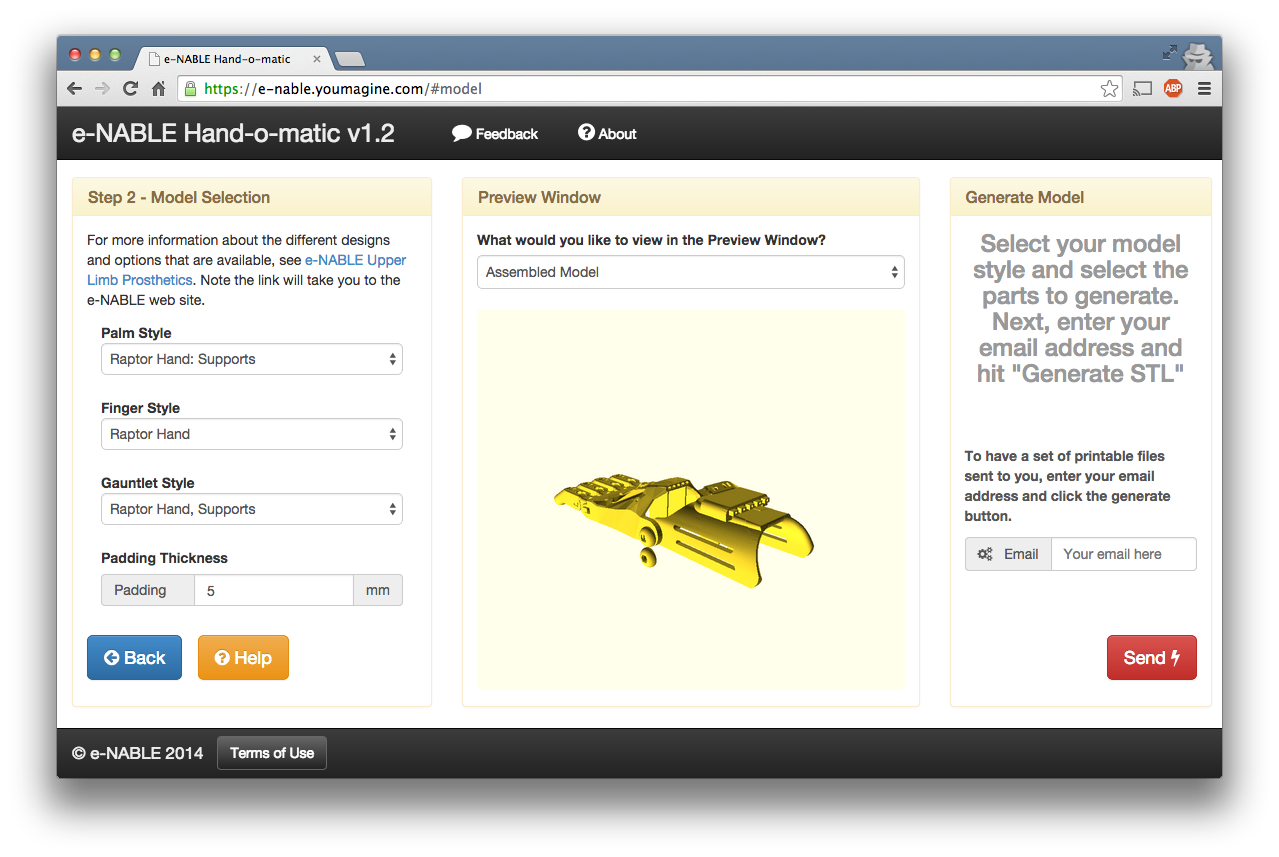Last week at Johns Hopkins Hospital, Baltimore, there was an amazing community event, the Prosthetists meet 3D Printers conference. Currently at 1600 volunteers and rapidly expanding, this community is “Enabling The Future.” E-Nable is collaboratively designing, printing and assembling 3D printed prosthetics for children and other underserved populations.

The e-nable conference was an amazing combination of children, parents, physicians, prosthetist, 3D modelers, software developers and many amazing volunteers. Ultimaker has been a big supporter of this event through a donation of $10.000 worth of printers and YouMagine is supporting it by providing infrastructure for sharing and collaborating 3D designs for prosthetics. Everybody is dedicated to make this work and the mix of people all “joining hands” towards a common goal.

272 hands were created by the community and made into kits by 3DUniverse, ready to be built at the event!
Within the community so much progress was made. Many people met in real life for the first time, because e-NABLE operates globally and online. Contributions come from across the globe and are available for use, study, modification and production anywhere. While global, 3D production can be as localised as the home of a prosthetic user on the family’s 3D printer or a relative or someone neighborhood who has one.
Click here for more photo’s that were taken at the event.
The 3D models for the latest design called the “Raptor Hand” were released just before the event. Yuo can find the official files hosted here on YouMagine. It contains the best design elements from several designs that had been made up to that point. Literally, the designers “joined hands” and made it better! Anyone can contribute and anyone can benefit.
The great thing about 3D printing is that it puts no premium on printing something different every time or making something completely customized. The exact measurements of the body can be used to create a perfectly fitting hand, taking into account the amount of padding material to make it comfortable. YouMagine works with the e-NABLE community to deliver a next generation of model customisation tools, starting with the Hand-O-Matic, which is available at e-nable.youmagine.com. This makes generating a tailored prosthetic hand radically easier, because you only need to provide your measurements. We’re proud to be able to support the e-NABLE community.

Hand-o-Matic: Easily create customized 3D printable prosthetics
I also gave a talk at the event. I explored the question of what defines us as humans. Since we differentiated from the apes, our hands have allowed us to create powerful tools which have become a major part of our society. We shape our own tools and our tools are in turn shaping us. Which tools we use and how we evolve them is what defines us. Our perception of the world changes as soon as we realize that we can be a creator of the physical objects around us. This is not new, we’ve just lost touch with the process of making physical things. We can awaken our maker DNA, but now with more powerful tools. The fact that you can collaborate with people around the world to create real objects that matter, that’s a game changer.
Now we’re using collaborative online tools and desktop 3D to provide hands to people who need them. e-NABLE is about community, sharing, giving, collaboration, making, open source and 3D printing. It’s the ultimate example of humanity enabled by powerful tools.









